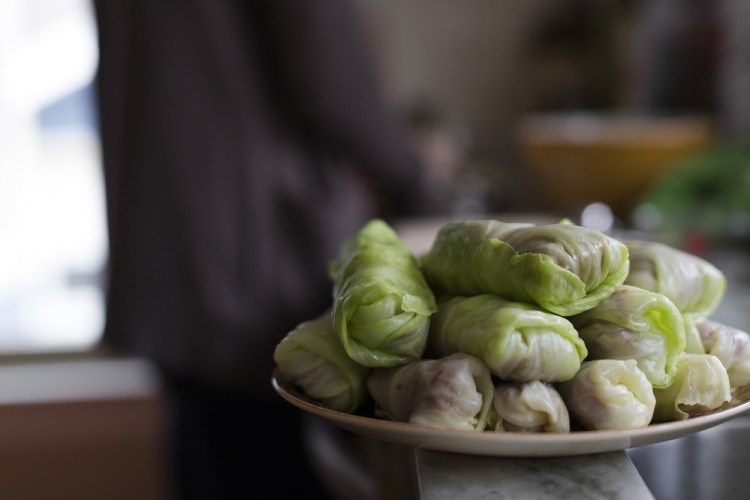My sister and I have been cooking our way through Maureen Abood’s cookbook, “Rose Water & Orange Blossoms,” and finding in the exploration of her Lebanese kitchen a connection to our own roots. Along the way, we’ve also discovered dishes that have quickly come to feel like old standbys, like the crowd-pleasing, cross-cultural casserole of lamb, tomato and eggplants that have been broiled to a crisp, called “sheik al mehsheh,” and a simple warm potato salad dressed with lemon and mint that is at home on a summer table alongside whatever has just come off the grill.
In our latest venture into Abood’s book, we found not just one meal to put into heavy rotation, but two. Actually, call it two and a half, with a lesson in leaving nothing to waste.
Abood’s cabbage rolls, stuffed with lamb and rice and boiled in a broth of tomato and garlic, are satisfying, even more because of the half-dozen chicken wings added to the pot for cooking. Served alongside a big green salad, dressed with lemon juice and olive oil, and with labneh, the ever-present Lebanese condiment made by straining salted yogurt, these made for a hearty family meal.
But, what about those chicken wings? And all that rich broth the rolls were cooked in? We put them to good use.
The chicken meat, so moist it simply fell off the bone, became dinner for my 1-year-old son – hence, the half – but could just as easily top a salad, be folded into a quesadilla, or get mixed into a colorful egg scramble.
The chicken bones went back into the pot, with all of that flavorful broth, topped off with some of the water used for blanching the cabbage, then out onto our back porch when the weather was still cold enough to keep it safely until we were ready the next morning to put it back on the stove. Into the pot we added a fresh whole chicken, along with the bag of kitchen scraps I keep in the freezer – kale ribs, lemon peels, carrot tops, celery bits, mushroom stems and more. We added a couple of bay leaves and some cardamom pods, the last a tip also picked up from an Abood chicken soup recipe.
The pot simmered for the better part of seven hours. (It’s best to remove the chicken about one hour in, pick the meat off and set it aside, then return the carcass to the pot.) We strained the broth, then added barely sautéed carrots, celery and onions, plus the chicken meat and about a cup of rice.
The many-layered broth made for a hard-to-describe soup that turned heads when I warmed it up in the office for lunch the next day. And it taught us a lesson our Lebanese ancestors surely knew: When you know how to work with what you’ve got, one delicious meal begets another.
Send questions/comments to the editors.



Comments are no longer available on this story